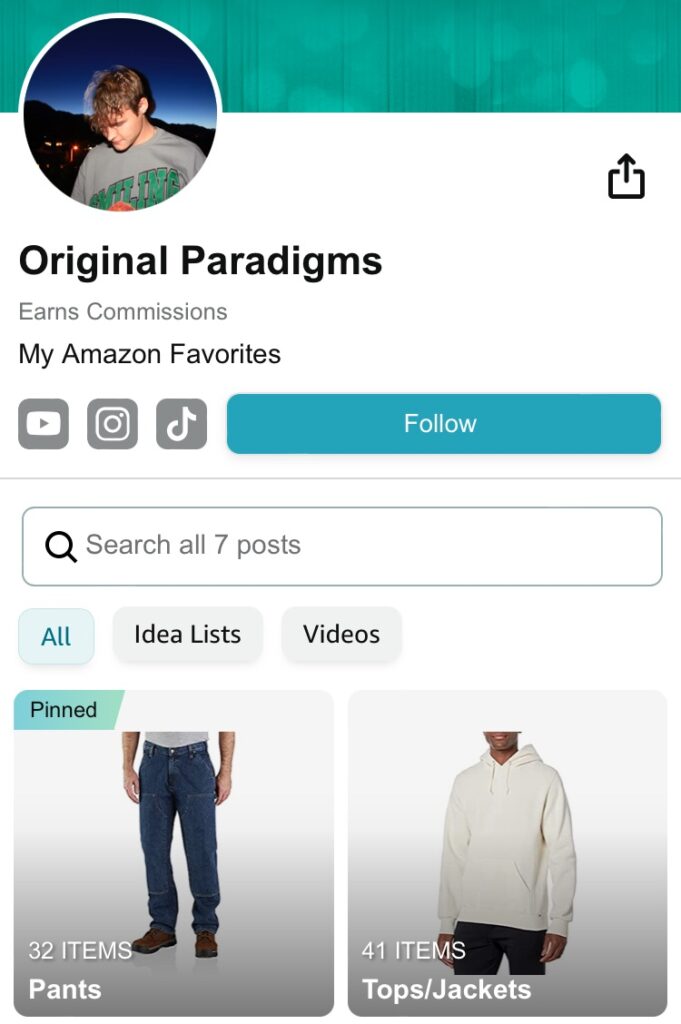You’re starting to see the term everywhere, but you’re wondering what is affiliate marketing? Keep reading for the ultimate guide to affiliate marketing, including its different types, how to make money with it, and its pros and cons.
What is Affiliate Marketing?
So, what is affiliate marketing? Let’s review the affiliate marketing definition:
Through affiliate marketing, marketers earn commission by promoting products through an affiliate link. When a sale is made through the affiliate link, the marketer that promoted the link earns a commission from the sale.
These affiliate links can be promoted on a website, blog post, podcast episode, YouTube channel, social media account, and more.
Most commissions from affiliate marketing are earned by making a sale. However, marketers can also earn money by generating leads, free-trial users, app downloads, website clicks, and more.
How to Start Making Money with Affiliate Marketing?
Affiliate marketing is a great way to make money because it typically doesn’t require any start-up costs. Joining an affiliate program and getting an affiliate link is usually free. This is because the money is earned after the sale is made, meaning it doesn’t cost the partner money upfront.
To help you become a successful affiliate marketer, let’s break down this marketing strategy step-by-step:
- Join an affiliate program and obtain your affiliate links.
- Create and publish an ad that promotes the affiliate product.
- Your target audience engages with the ad.
- The potential customer is sent to the affiliate website to view the product or service.
- The customer makes a purchase, thus triggering an affiliate sale.
- The affiliate partner records the affiliate sale.
- An affiliate commission is sent back to you, the affiliate marketer.
If you feel like you need more guidance on how to become an affiliate marketer, we have a course suggestion for you. The Affiliate Lab is an affiliate marketing course. It was created to teach participants to build, rank, monetize, and eventually flip affiliate marketing websites.
This online course includes 160 videos and can be completed at your own pace. It takes an in-depth discussion of the exact methods and templates the founder, Matt Diggity, uses to grow his own agency and portfolio of sites.
Whether you’re looking to flip your affiliate site or keep enjoying its monthly income, this course will help you get there. Click here for $200 off The Affiliate Lab course.
Want to see more options? Check out our post on the best affiliate marketing courses to help you make money.
Affiliate Marketing Types
While the process of forming an affiliate partnership might feel easy to you, you can try many types of affiliate marketing. Whether you consider yourself an expert or want to learn more about affiliate marketing for beginners, knowing the different types you can engage in will help you know where to target your affiliate marketing efforts. Let’s review a few different types of affiliate partner marketing.
Involved Affiliate Marketing
Firstly, we are going to discuss involved affiliate marketing.
Involved affiliate marketing occurs when the marketer promotes only products and services they’ve used themselves and deeply believe in.
This type of affiliate marketing is seen as the most trustworthy. This is because it’s founded on authenticity by the marketer and trust with their audience. Influencer marketing is a form of affiliate marketing.
This type of affiliate marketing requires more time and effort to build an authentic connection with your audience. However, this also makes it one of the most sustainable options. Having this authentic relationship with your target audience means they’ll trust your recommendations, earning you more sales.
On the other hand, it also means you should be choosy with each affiliate merchant you partner with. While you might be turning down potential partnerships if the product or service doesn’t meet your standards, it will be better for your affiliate business in the long run.
This type of affiliate marketing effort can include authentic promotions like:
- Instagram Stories providing your genuine review of a product
- YouTube video discussing in detail how you use the product you’re promoting
- Blog posts detailing your experience with a particular service
- TikTok video showing how useful the product is
Related Affiliate Marketing
The second form of affiliate marketing is related affiliate marketing.
Related affiliate marketing occurs when affiliate marketers promote products and services that are related to their specific niche. However, they don’t currently use them.
These types of affiliate marketers are typically already content creators. This is because they’re using their existing platform and audience to promote these products and services. These affiliate marketers have influence, which makes their target audience trust their recommendations despite the fact that they’ve never used the product or service they’re promoting. For example, influencer marketing is also a form of related affiliate marketing.
It’s considered “related” because the products and services are relevant to their existing audience. However, the marketer isn’t promoting the products based on their personal experience with them.
The risk with this type of marketing is that it can put your reputation as a thought leader in danger. For example, if you promote a product or service that doesn’t live up to your hype, you could lose the trust of your audience. Once you’ve lost the trust of your followers, it’s very tough to earn it back.
Unattached Affiliate Marketing
As the name suggests, unattached affiliate marketing is the most withdrawn form of affiliate marketing work.
Unattached affiliate marketing occurs when the marketer has no attachment or authority on the product they’re promoting. As an affiliate marketer, you don’t have a relationship with your target audience or the product or service you’re promoting.
This type of affiliate marketing campaign involves creating pay-per-click advertisements for a product or service, directing traffic to that affiliate link, and hoping they make a purchase. This can include Google Ads, Facebook ads, banner ads, and more.
It’s attractive to people who don’t want to or aren’t already big-time content creators with an engaged audience. You don’t need to be a thought leader in your niche in order to start promoting products or services. Furthermore, you don’t have to spend the time or energy building those relationships with your target audience.
While this method doesn’t involve building that relationship, you do need to be savvy in your pay-per-click campaigns. If you’re not able to create effective ads that earn clicks, then this type won’t work for you.
Affiliate Marketing Examples
Now that you understand the concept of affiliate marketing and how to make money from it, let’s explore a few examples.
Amazon
The Amazon Associate program is one of the most popular forms of affiliate marketing.
Through the Amazon Associate Program, participants promote some of the millions of products available on their website. This is typically done by creating an Amazon storefront and linking to it on their website, podcast, or social media. After the sale is made, the affiliate marketer earns a percentage of the value of the sale. These percentages are preset by Amazon, and they often change.
Here is just one example of the many promoters of this popular affiliate network.
The first picture shows a TikTok video promoting the user’s latest product find from Amazon.

The link in his TikTok profile takes you to his Amazon storefront, pictured below:

This affiliate marketing program offers a low barrier to entry. It also offers a wide variety of available products to promote. This means that no matter which niche you occupy, you can find products uniquely helpful to your specific audience.
Blog Site: Wirecutter
The New York Times acquired Wirecutter. This blog site earns money by writing about products and listing affiliate links.

With this model, the site earns money by posting lengthy product reviews and linking to each product. This is a great example of how you can create a website and fill it with blog posts for the purpose of earning additional income.
Pros and Cons of Affiliate Marketing
As affiliate marketing’s popularity continues to rise, how do you determine for yourself if it’s worth diving in? Whether you’re a small business, digital marketing professional, or an influencer, making an informed decision is important. To help you decide if building an affiliate network is right for you, we discuss some of the pros and cons of affiliate marketing below.
Pros
There are many pros to building an affiliate network. Let’s dive right into discussing them.
The pros of affiliate marketing include the following:
- Low cost: Joining an affiliate marketing program requires little to no cost. Affiliate commissions are earned after the sale is made. This means that money is exchanged after it’s earned, thus eliminating the need to pay upfront.
- Easy execution: While the burden of inspiring a sale falls on the affiliate marketer, the job of filling the order falls on the affiliate partner. This means that you don’t have to order products, fill an order, provide a service, or offer additional customer support as your affiliate partner does.
- Remote work: One of the biggest draws to affiliate marketing is that it can be completed remotely from anywhere. It doesn’t require you to drive into an office at specific times. This means you can start building your own income at any time from anywhere.
- Low risk: Affiliate marketing requires little investment, so it’s a very low-risk business venture. You don’t have to invest a significant amount of time, money, or resources to begin.
- Easily scalable: If you find yourself asking how much do affiliate marketers make, the answer might happily surprise you! This venture is as scalable as you would like it to be. Once you find partnerships and promotional methods that are working for both you and your target audience, these affiliate marketing efforts should be easily scalable.
Cons
You’re now aware of the benefits affiliate marketers experience. Now, let’s also review some of the cons of affiliate marketing. These cons include:
- Tests your patience: Executing an effective affiliate marketing strategy requires time, patience, and consistency. You will not get rich overnight off of one affiliate link. However, with consistent effort, your hard work will start to pay off.
- Adhere to affiliate partners’ rules: When you choose to partner with a specific affiliate program, you have to follow the rules of that program. Your affiliate link will be revoked if you do not follow their rules. Every other affiliate partner has to adhere to these rules too, which means you’ll have to work extra hard to stand out from your competition.
- Inconsistent pay: When you engage in affiliate marketing, you’re earning money when the sale is made. This means you’re earning money sporadically, not on a bi-weekly basis, like with a consistent corporate job.
It’s Time to Get Started
Joining an affiliate program can be a low-cost and low-risk way to earn extra income. With consistent effort and an effective strategy you can start earning passive income from affiliate marketing!
